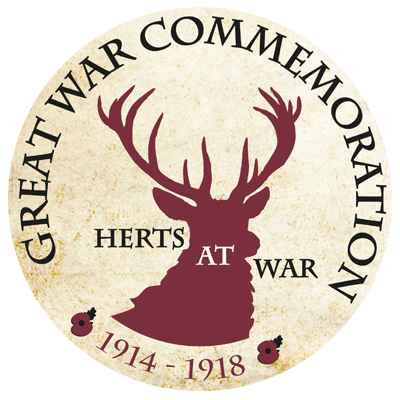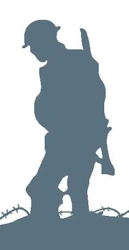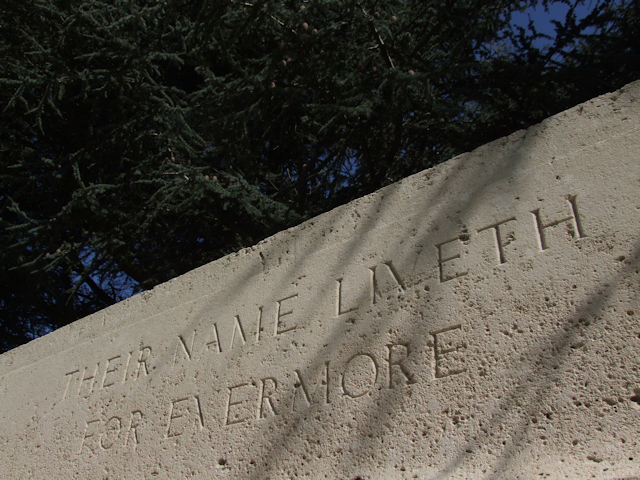Name
Herbert James Gates
Conflict
First World War
Date of Death / Age
02/11/1918
Rank, Service Number & Service Details
Private
266022
Oxford and Bucks Light Infantry
2nd/4th Bn.
Awards: Service Medals/Honour Awards
1914 /15 Star, British War and Victory medals
Cemetery/Memorial: Name/Reference/Country
MARESCHES COMMUNAL CEMETERY
South-East end.
France
Headstone Inscription
No Report
UK & Other Memorials
Tring Town Memorial, St Peter & St Paul Church Roll of Honour, Tring
Pre War
Herbert James Gates was born in 1896 in Weston Turville, Bucks to Frederick Gates, a grocer and hay & straw binder, and Emma (nee Casemore).
On the 1901 Census the family of parents, Frederick E, Walter T, Frank J and Arthur (born 1894) had moved to 12 Akeman Street, Tring. Herbert James was recorded in the Isolation Hospital, Aldbury ,as a patient.
On the 1911 Census the family were still living at 12, Akeman Street, Tring: Walter was a Baker, Frank was a Draper’s assistant. Arthur was hairdresser’s assistant and Herbert James was a grocer’s apprentice.
Wartime Service
No Service Record was found for Herbert, he joined at Aylesbury as Private 3062 in 2/4 Battalion of the Oxfordshire & Bucks Light Infantry which had formed at Oxford in Sept 1914 as a second line unit. In Jan 1915 it was attached to 184th Brigade in 61st (2nd South Midland) Division. In May 1916 the battalion landed at Havre, and from there on engaged in various actions on the Western Front at Fromelles (1916), 3rd Ypres (1917), Defence against German Spring Offensive (1918).
Lance Corporal Gates’ death (2nd Nov 1918) appears likely that he was killed during the fighting of the battalion’s last action of the war – that Captain G. K. Rose M.C. describes in The Story of the 2/4th Oxfordshire & Buckinghamshire Light Infantry (1920): “The Battalion joined the XVII Corps half way through October, 1918, and was soon put into important fighting. The enemy, who had lost Lille, Douai, and St. Quentin early in the month, was now in full retreat between Verdun and the sea. To preserve his centre from being pierced and his flanks rolled up, rear-guards eastward of Cambrai were offering the maximum resistance. Most villages, though they passed into our hands nearly intact and in some cases full of civilians, had to be fought for. The German machine-gunners rarely belied their character of fighting to the end. In an attack on October 24 from Haussy, the Battalion, advancing rapidly in artillery formation, captured the high ground east of Bermerain; and the next day B and D Companies (the latter now commanded by Cupper) again attacked, and captured the railway south-east of Sepmeries. For these operations the weather was fine, the ground dry, and the leadership excellent. A period followed in reserve at Vendegies and afterwards at Bermerain [about 3 kms S.E. of Maresches, where Gates is buried], villages which were liberally bombarded by the German long-range guns. Moving up again on November 2, the Battalion made its last attack of the war. A fine success resulted. The objectives — St. Hubert and the ridge east of it — were captured, together with 700 prisoners, 40 machine-guns, and 4 tanks, recently used by the enemy in a counter-attack. The fruits of this victory were well deserved by the Battalion, the more because so often in the course of the war it had been set to fight against odds in secondary operations. It was a good wind-up.”
Additional Information
War Gratuity of £19 and arrears of £18 9s 9d was paid to his mother Emma.
Brother Walter served as Private G/2204 7th Battalion Buffs (East Kent Regiment) , died of wounds 12 Jul 1916. Brother Frank served as Rifleman 371624 8th Battalion (Post Office Rifles) London Regiment, died of wounds 26 Jul 1918.
Acknowledgments
Neil Cooper
Jonty Wild



